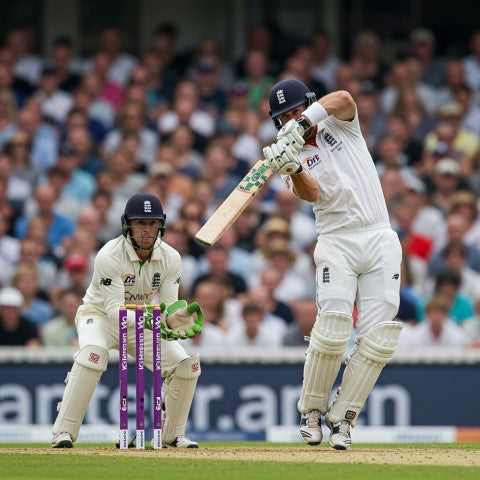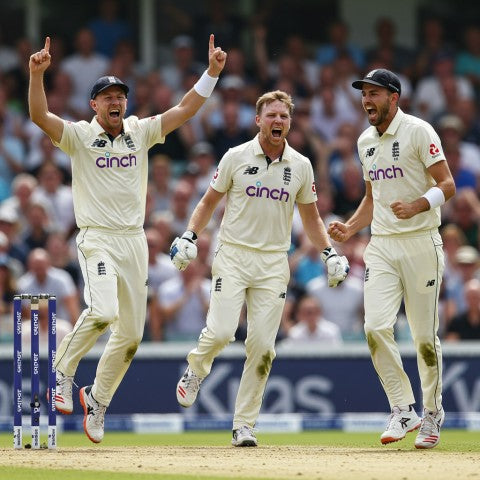Will Cricket Ever Crack the US Market?

Few sports have a global footprint as vast as cricket. It commands stadiums in India, attention in England, and reverence in Australia. Yet, in one of the world’s biggest sporting economies — the United States — it remains a curious outlier. Why has a game with over 2 billion global fans failed to catch fire in the US? And more importantly, will cricket in the US ever become more than a niche pursuit?
The potential is enormous. The US is home to a tech-savvy South Asian diaspora, deep-pocketed investors, and a growing hunger for diverse sporting entertainment. In theory, T20 cricket — fast, loud, marketable — should align perfectly with American tastes. Add in streaming platforms, corporate backing, and recent ICC plans for American World Cups, and it’s no longer an absurd question. It’s a matter of when — and how.
But cultural inertia is a formidable obstacle. Cricket’s rules are arcane to newcomers. Baseball, basketball, and American football dominate airtime and advertising budgets. Is there room for another bat-and-ball sport in a saturated landscape?
In this article, we examine whether cricket in the US is a pipedream or the next big frontier — and what it would truly take to break through.
1. A Long Road: Cricket’s Historical Attempts to Enter the US
Believe it or not, cricket in the US is not a new phenomenon. In fact, the sport predates baseball in American history. The first recorded international cricket match — played in 1844 between the United States and Canada — took place in Manhattan, drawing thousands of spectators. During the 18th and 19th centuries, cricket had genuine traction among America’s East Coast elite.
However, the rise of baseball during the Civil War years ultimately edged cricket out. Baseball was faster, simpler to understand, and could be played on makeshift grounds. It became woven into American identity, while cricket faded into the background, kept alive largely by immigrants.
Throughout the 20th century, sporadic efforts to revive cricket in the US failed to gain real traction. The sport remained largely confined to expat communities — particularly those from the Caribbean, South Asia, and the UK — without broader cultural penetration.
The 2004 Pro Cricket league was one of the more high-profile flops. Despite featuring international stars and American branding, it folded within a year. Subsequent efforts by the ICC and USA Cricket suffered from poor governance and lacklustre funding.
The lesson? Passionate pockets of players have always existed, but real breakthrough has required something more: alignment between governance, capital, and cultural timing. That may finally be changing.
2. The South Asian Diaspora: Cricket’s Sleeping Giant in America
If there is one force that could make cricket in the US viable, it’s the South Asian diaspora. With over 5 million Indian, Pakistani, Bangladeshi and Sri Lankan Americans — many of whom carry deep cricketing passion — this community represents the sport’s most powerful grassroots base in the country.
Across cities like New York, Houston, Atlanta, Chicago and San Francisco, local cricket leagues flourish. Weekend fixtures on suburban fields have become ritual, often drawing multi-generational families. Youth academies are springing up, and cricket nets are appearing alongside basketball hoops in schools with high South Asian populations.
This diaspora doesn’t just play — it spends. It streams the IPL, buys merchandise, and fills stadiums when India tours. They’ve helped establish cricket as a digital product in America, driving views on YouTube, Willow TV and Hotstar.
But diaspora support alone isn’t enough. Many of these fans follow cricket in much the same way British expats follow football in the States: passionately, but inwardly. For cricket to scale, it must extend beyond the diaspora.
That said, this community offers a foundation that no other emerging sport in the US enjoys — a critical mass of knowledge, cultural attachment, and financial appetite. If leveraged correctly, the South Asian diaspora could turn cricket in the US from a novelty into a movement.
3. Major League Cricket: T20’s Bold American Experiment
Launched in 2023 with backing from Microsoft CEO Satya Nadella and other Silicon Valley heavyweights, Major League Cricket (MLC) is the boldest attempt yet to embed cricket in the US sporting ecosystem. With city-based franchises, professional players, and high-quality venues, MLC is trying to do what no one has before: sell cricket as entertainment to Americans — not just immigrants.
And the format? Pure T20. Fast-paced, prime-time friendly, and designed to appeal to the US market’s love for drama and data. Matches last under three hours, are punctuated by music, fireworks, and digital highlights — a blueprint cribbed directly from the IPL’s playbook.
Early signs have been promising. The inaugural season drew respectable in-person attendance and high streaming numbers on Willow and Sling. Teams like the Los Angeles Knight Riders and Texas Super Kings — with ties to Indian IPL franchises — provide instant brand recognition.
But challenges remain. Franchise depth, scheduling (it clashed with MLB and NFL offseasons), and media rights will all shape its future. Can MLC attract mainstream American sponsors? Will it find space on ESPN or NBC Sports?
Still, this is the first time cricket in the US has had proper infrastructure, capital, and strategic vision working in sync. MLC may be cricket’s best shot yet at building a sustainable league — and a new fanbase.
4. The Baseball Question: Competing with America’s National Pastime
One of the biggest hurdles facing cricket in the US is unavoidable: baseball. The two sports, while vastly different in strategy and pace, are visually and conceptually similar to the untrained eye — bat meets ball, fielders in position, innings, runs. But baseball owns that imagery in America.
With roots that go back nearly two centuries and a cultural significance comparable to football in Brazil or hockey in Canada, baseball is more than just a sport — it’s Americana. Cricket, by contrast, is still seen by many as confusing, foreign and time-consuming.
That overlap has worked against cricket. When American audiences encounter it, many dismiss it as a “weird version of baseball.” This confusion makes initial engagement difficult — especially when broadcasters fail to provide contextual education for new viewers.
Yet, there is an opportunity hidden in the comparison. As baseball grapples with declining youth participation and viewership among younger demographics, cricket — especially T20 — can market itself as the more global, more diverse, and equally thrilling alternative.
The key will be in how cricket positions itself. Rather than competing with baseball, it might thrive by complementing it — carving a space among audiences who are increasingly global, mobile, and interested in novelty.
If it can frame itself as baseball’s sophisticated, international cousin, cricket in the US may have more room to grow than we think.
5. Infrastructure and Grassroots: Can Cricket Build from the Ground Up?
If cricket in the US is ever to move beyond elite leagues and expat viewership, it must develop what all sustainable sports depend on: grassroots infrastructure. For decades, American cricket has lacked the basic tools for national growth — proper pitches, qualified coaches, youth academies, and standardised competitions.
That’s beginning to change. Cities like Houston, Morrisville and Dallas now boast purpose-built facilities, with turf wickets, spectator stands, and lighting systems that rival top-level grounds elsewhere. Major League Cricket (MLC) has injected capital into upgrading stadiums, while youth-focused academies — many run by former international players — have begun cultivating serious local talent.
USA Cricket, the governing body recognised by the ICC, has launched developmental plans aimed at school-level expansion and national youth leagues. However, bureaucratic instability and lack of long-term government support have hindered these efforts.
One promising sign: cricket’s inclusion in the Los Angeles 2028 Olympic Games short list. Olympic recognition could unlock funding, visibility, and grassroots participation unlike anything seen before in the country.
Still, there’s a long way to go. In a nation where sports like basketball and soccer have hyper-developed youth ecosystems, cricket in the US needs patient, strategic growth — starting at playground level, not just headline level.
6. Cultural Translation: Making Cricket ‘American Enough’
One of the hardest challenges for cricket in the US is cultural. The game, in its traditional formats, is slow, strategic and steeped in nuance. Its language — “silly mid-off,” “googly,” “leg before wicket” — often confounds newcomers. It is a sport that demands context and patience, two commodities that are in short supply in the fast-twitch, highlight-driven American media landscape.
But this doesn’t mean cricket must dilute itself. It means cricket must translate itself. T20 is already a key bridge: three hours of explosive action, loaded with sixes, music, and drama. Franchises adopting American-style branding — team names, mascots, digital engagement — have started the right way.
Commentary and broadcasting will be pivotal. Cricket needs storytellers who understand both the American and cricketing idioms — to explain not just what’s happening, but why it matters. Think Tony Romo, but for cover drives and doosras.
There’s also potential in connecting cricket with broader American values: strategy, underdog victories, individual flair. Cricket isn’t un-American — it just hasn’t told its story the right way yet.
For cricket in the US to grow, it must find a tone and tempo that resonates — not by becoming baseball-lite, but by being bold enough to speak in a new accent.
7. Media, Broadcasting and the Role of Streaming Giants
No sport grows in the 21st century without smart media strategy — and cricket in the US is no exception. Traditional sports networks like ESPN, Fox and NBC have shown little consistent interest in cricket, citing low ratings and scheduling conflicts. But where cable hesitates, streaming steps in.
Willow TV, Hotstar, Sling and YouTube have quietly built loyal cricket audiences across the US. The IPL alone draws millions of views every season, mostly among diaspora households. In 2023, the MLC struck a deal with CBS Sports to show matches — a landmark moment for broadcast credibility.
Yet the biggest opportunities lie with tech giants. Amazon, Apple and Netflix are increasingly hungry for sports content. With T20’s short format and built-in drama, cricket is ripe for packaging in bingeable, episodic form — whether through live coverage, behind-the-scenes content, or docuseries (à la Drive to Survive).
Social media is already doing much of the legwork. Players like Rashid Khan and Andre Russell are TikTok-ready athletes with cult followings. MLC teams have begun using reels, memes and interactive graphics to engage younger viewers — key to sustainable expansion.
If the ICC and local leagues can secure the right streaming partnerships, cricket in the US could bypass traditional gatekeepers entirely — and go straight to phones, tablets and living rooms.
8. The ICC’s Grand Vision: World Cups and Soft Power in the US
The International Cricket Council (ICC) has made its ambitions clear: cricket in the US is not a curiosity — it’s a strategic priority. Hosting the 2024 T20 World Cup in the US (co-shared with the West Indies) is the first major move in what it sees as a decade-long growth arc.
The tournament will serve as a massive visibility push — placing games in New York, Dallas and Miami, alongside legacy venues in the Caribbean. For the ICC, this is about more than just ticket sales. It’s about planting cricket’s flag in one of the last great untapped markets.
There’s also a soft power element at play. The ICC, led primarily by India, Australia and England, sees American expansion as a way to globalise influence — economically, politically and culturally. With India’s diaspora growing in economic clout within the US, cricket may also become a vehicle for cross-cultural engagement.
The goal? An American team in the 2030s that can compete — not just participate. Olympic cricket, US-based IPL franchises, youth development and digital streaming are all pieces of the same puzzle.
It’s bold. It’s risky. But if successful, it would reshape global cricket permanently — adding a billion-dollar media market to its already massive base.
Conclusion: Cricket in the US — A Dream Deferred or the Next Frontier?
So, will cricket in the US ever truly crack the code? The signs are both encouraging and sobering. There’s infrastructure being built, leagues forming, viewership rising — yet barriers of culture, competition and communication still stand tall.
But this time, the ambition is different. Major League Cricket isn’t just another short-lived experiment; it’s a tech-backed, media-savvy attempt at full integration. The ICC isn’t just observing — it’s investing, planning, and insisting. And the diaspora is no longer passive — it’s engaged, organised, and ready.
Cricket doesn’t need to become America’s No. 1 sport to succeed. If it can find its lane — among soccer, rugby, and UFC — and carve out 1% of the sports economy, that’s still billions in value and millions in fans.
Cricket in the US won’t be a revolution. It will be a long, strategic campaign. But for the first time in history, it’s not a laughable idea — it’s a very real possibility.
And if the 2024 World Cup goes to script, it may just be the innings that changes everything.





Leave a comment